
Here’s a great question I got from the very talented Jeni Prince of Kaui:
Aloha Maria, I enjoy your blog and all the great info. What’s the best way to send your portfolio to a prospective company? I would like to send artwork to a clothing company so they can see my work and use my images. My issue seems to be the initial contact and what to send. Mahalo, Jeni Prince, Kauai www.kauaiarts.net
First, for those out there who aren’t familiar, I want to clarify what LICENSING is. Because this is what Jeni is asking about – granting a company rights to use her artwork on their products.
Licensing your art means: that you allow a company (Licensee) to use your art on their goods for a period of time (say 2 years) for a royalty (say 8% of sales or a one-time flat fee) for a product (say towels) to be sold in a specified distribution channel (say department stores). You keep the rights to the artwork, as well as the original. You are only granting your Licensee the rights to use the digital images, you always keep the original.
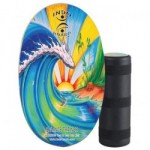
Here’s why licensing exists, in a little nutshell: Why would a towel company pay to print your art on their towels – they have a good quality product, and they are selling it in 2,000 stores, so why do they need you? Because while they may be great at making towels, your art is going to help them sell more towels.
And why would you license your art to a towel company when you could make your own towels? Oh, well, because you aren’t a towel company. You’re an artist. What you do best is paint and create cool art. If you went into the towel business, trust me, your painting days will come to a screeching halt! I talk about this in my post about the “Biggest Mistake We Ever Made”.
In one sense, it’s not complicated to get a license deal going with a company, if everything comes together at once. Sometimes we get lucky and it all just glides like warm butter on a plate. But other times, we have to work our tails off to get the license we really want.
And by “we” I am mean my husband Drew Brophy and myself. Together we team up to license his art to companies that make quality stuff like Converse shoes and Skin-it skins and skateboards, wakeboards, etc.
This week we closed a deal with Hinano Tahiti, a clothing company. Drew is creating artwork for their 2011 line. I am excited about this, because Hinano makes clothes that I really like, and the people there are super cool. I’m always energized when Drew has a new big painting project. In this case, he’ll be making a huge painting of a Tahitian Story, and I love watching him put on his blue painters’ apron (it’s so sexy) and go to town with the brushes. And then there’s the chance to fly to Tahiti, and I’m shamelessly driven by the prospect of traveling to paradise and calling it work. But I’m getting off track here…
So, to help me better answer the question above, I’ll refer occasionally to our Hinano Deal as an example.
Six Points About Presenting Your Art to a Prospect:
- NETWORK AND FOLLOW UP: It’s best if you know someone at the company you are going to approach. Put yourself out there into the events where you’ll meet the contacts you need to know, or the people who can introduce you to the right people. Every industry has their trade shows and networking events. Go to them and develop relationships. Recognize and seize opportunities to ask people if you can set up a time to show your artwork. When you meet someone in person, you have a much better chance of getting a meeting with them than you do cold-calling.
Here’s how our Hinano Tahiti deal was born: Last September Drew performed a live surfboard painting for a charity event that was hosted by Hinano Tahiti. Drew had previously met the President of Hinano at other surf events, and on this night he planted the verbal seed to consider using Drew’s art for their clothing line. A month later the President and his father stopped into our studios and bought a piece of art off the wall (so nice of them!) At that time, we briefly talked about the possibility of a license. I followed up by e-mail and set up a formal meeting for the first week of this year.
Once you get your meeting, that’s where both parties have the opportunity to determine if your art and their product will go well together. It’s also your one chance to wow them with what you’ve got to offer.
- CHOOSE THE RIGHT COMPANIES: If you are an artist who paints skulls and gnarly naked chicks, you won’t be going to Tommy Bahamas to license your artwork. It just won’t fit their demographic!
Do a little research and find the companies that cater to the demographic that your artwork and style will best fit.
- HAVE PATIENCE: You might be told “We aren’t looking for art right now.” That’s okay. But they might need it later, when something changes within their company. The in-house graphic artist might quit, or suddenly their customers are asking for the type of art that you create.
Please, don’t get discouraged if you are told “NO.” IT’S NOT PERSONAL.
Keep in touch with the company anyway. This is where snail mail can really come in handy. So many people delete e-mails if it’s not something they want to read (I do this, too), but they can’t delete real mail. It’ll end up on their desk and they’ll be reminded of your existence and your incredible art. Send them occasional postcards with your artwork. Mail Christmas cards with your artwork on the card. Just keep reminding them every now and again that you are here, and you’re ready when they are.
Sometimes we’ll be in touch with a company for two or three years before they finally say “yes”. It’s worth the wait.
- SET UP A MEETING: If you aren’t able to meet the people you need to connect with at a networking event, then use snail mail and the internet instead.
Find out the name of the person you need to talk to. In very small companies, your direct contact could be the President or CEO. In larger companies, you would talk to the Art Director. In companies that license artwork or characters regularly, you would ask for the person who handles licensing, usually a Licensing Manager or Vice-President of Licensing, or some such title like that.
If you have a friend that knows the person that you are trying to connect with, ask that friend to put in a good word for you. It’ll be easier for you to get a meeting that way.
Send a cover letter with samples of your work to the contact. Your letter should be short and to the point. (Nobody has time to read anymore. Long letters end up in the trash.)
Your letter should introduce yourself briefly and ask for a meeting (either in person, or if you’re too far away, on the phone). The letter should include printed out samples of your best work, enough to pique their interest. Also include your biography on a separate sheet.
You could include mocked up samples of what their product would look like with your art on it. But I prefer to save this step for the meeting or to e-mail prior to a phone meeting.
If you want to reach out by e-mail rather than mail, send a link to your website or a page that shows your artwork and ask for a meeting and for permission to e-mail jpgs of your work. Don’t send an e-mail with a bunch of jpgs to someone you’ve never talked to. It really makes some people mad, and most won’t open e-mails with attachments from people they don’t know.
If you don’t hear back after a couple weeks, follow up with a telephone call and be very gracious and professional. If they aren’t interested initially, don’t give up.
- HAVE A WELL THOUGHT OUT PRESENTATION: When you get the opportunity to meet with your contact, be sure to ask questions and listen to their wants and needs. Be fully prepared with a nice presentation.
One of the biggest mistakes artists make is showing a company a portfolio mess of a hodge-podge of their artwork in various themes and styles. It’s too confusing and it’s disorganized.
You want to present a clean portfolio showing about a dozen images in one theme. You can show them several themes, just be sure you have 8-12 images per theme.
An example of a theme would be a collection of 12 of your best paintings depicting the lifestyle of Maui. You may have another dozen paintings in the theme of underwater scenes. Another collection could be a theme of dolphin paintings.
You could also have mock-ups prepared for the meeting. If you are talking to a t-shirt company, do some mock ups of t-shirts with your artwork on them.
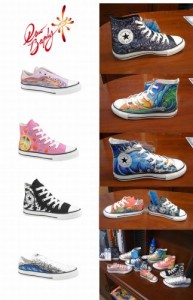
Just remember: THEME, COHESIVE, COLLECTION. And be sure that your themes will match what their company is about, their branding, and their customer base.
The main goal is to provide them with artwork that will help them to sell as many pieces of their product as they can. That’s going to be what’s important to them – how your art will sell their product.
In the case of Hinano, Drew prepared for our first meeting with them by printing out examples of t-shirt, fabric and board short designs he’s done in the past. With this deal, instead of using existing art, Drew is actually going to paint all new Tahitian style paintings. But it was very helpful to have examples of what he’s painted in the past so they could point out what elements of his artwork they liked best, and together they could determine what the new artwork would capture and look like.
In that meeting, we looked through Hinano’s catalogs and Drew asked them questions such as what existing designs worked well for them, the age range of their customer, and what they like best about Drew’s artwork. They explained what attracted them to Drew’s art (it was the bright colors and energy) and what elements they’d like to see in the artwork that Drew is going to create for them.
Side note: In most licensing agreements, you’ll license existing artwork. However, there will be times that it makes sense for you to design something new for a license.
- FOLLOW UP: The purpose of your first meeting is to see if there’s interest on both sides to move forward. I rarely quote prices, advances or royalty rates on the first meeting, because with artwork it’s different every time. I’ll close the meeting with an understanding of what they want (how many images, for which products, if new art will be created, etc.) and then I’ll take time to put together a proposal to send to them a few days later. I like to mull it over, because if I give a price or oral proposal on the spot, I usually screw it up.
I’ll follow up a few days later with a proposal or deal memo that details what I’m asking for. Then I follow up with a phone call and ask for them to sign the proposal or deal memo, send a deposit and let’s get started.
To tell the truth, every deal is different, every license we’ve done has come about in a different way. Some have been from companies calling us; some we’ve tracked down, some fell in our lap and some we chipped away at for years before we got it.
If I were to guess what the most important things were that helped us get our deals, it was:
- Drew’s reputation for having integrity and a strong fan base (which grew over time); and
- Relationships with people. Cultivating relationships with either people in the companies we want to work with, or with friends or colleagues of people in the companies. Networking and going to events is a huge part of this equation.
Good luck, and please, if you have any questions or thoughts or comments on this post, give them to me in the comments, I live for comments!



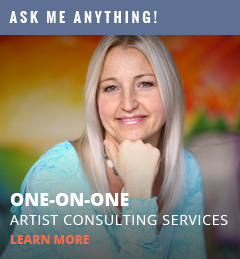

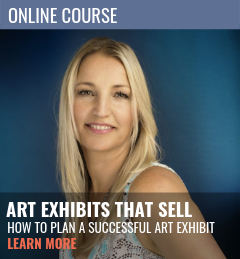
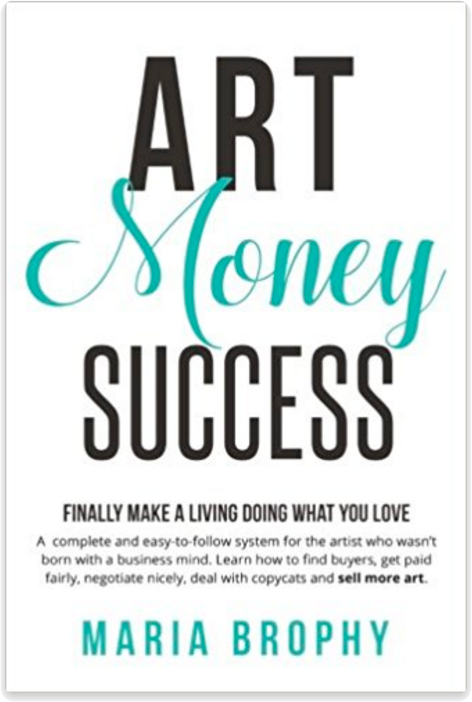

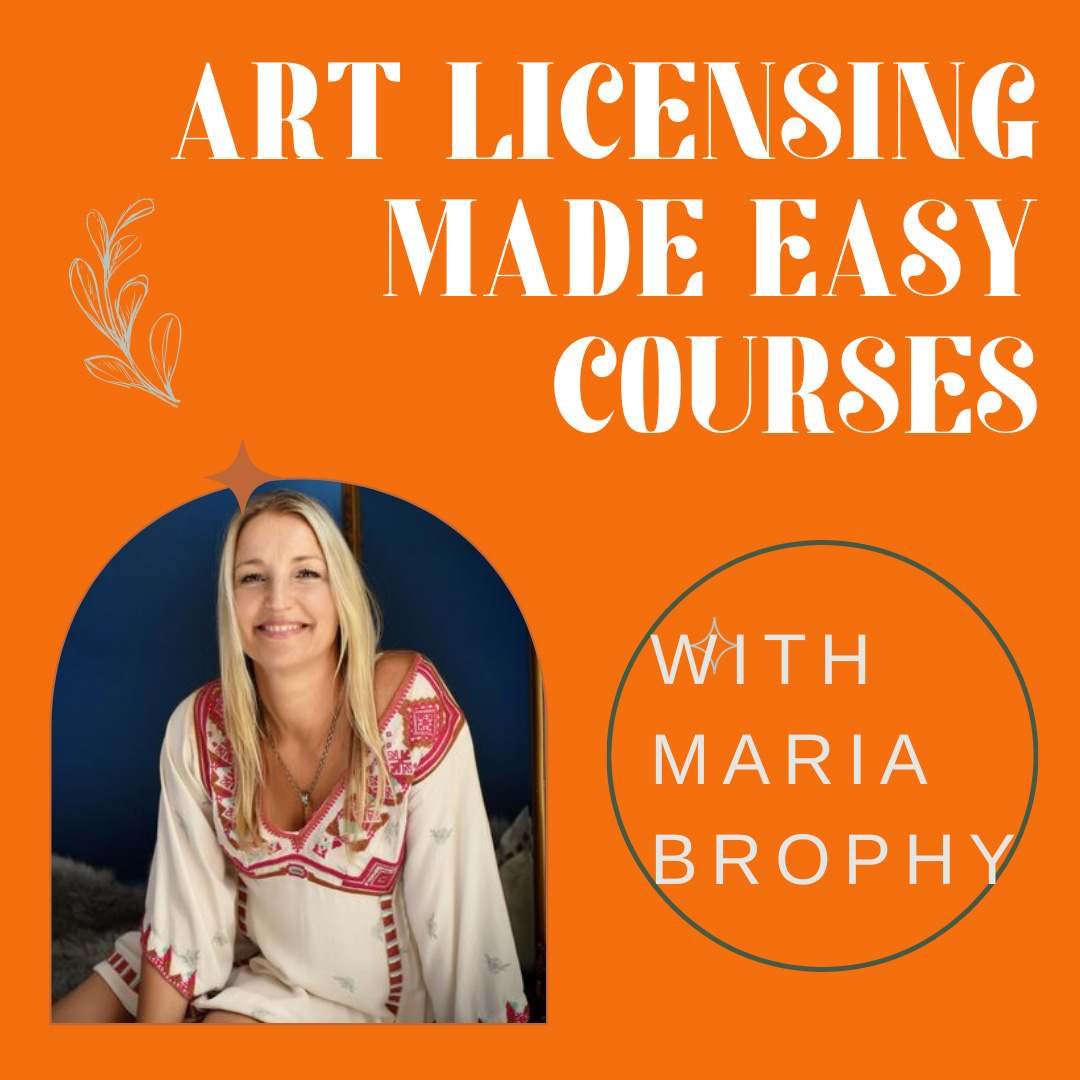

7 Responses
Maria,
This is one of your longer posts. Thanks so much for the education.
It is true: there is no substitute for face to face communication. It is crucial to start cultivating relationships to stay in this business of art.
One of my friends, a writer, has had a lot of success (over the years) due to his penchant for socialization. This friend is outgoing and an extrovert and his PR is excellent. Inviting people home for tea or even meals is second nature. The women in his life are amazing chefs.
As a result, this friend has managed to cultivate relationships with the creme de la creme of society. Over time, those relationships have led to actual friendships. Today, this friend is considered as an “expert” although he lacks formal qualifications or credentials. Whenever the media want an article or photo (or even suggestions) this friend has become the “go to” person and has earned quite a reputation.
If memory serves, this friend’s bachelor’s degree is in a totally unrelated subject (economics) and he was a really ordinary student.
However, his ability to wine and dine people has enabled him to win awards and honors and now he is even publishing his own books.
Just thought this information was germane to the issue discussed, so thought of sharing. Hope your readers find it useful too. Thanks.
Thanks, Archan. Often I’ll have clients over for dinner, too. I have a backyard seating area at my home that we call “The Wine Trap.” It’s where we apply wine with the glowing ambiance of a warm fire and a little truth serum to our guests. Makes for a most memorable evening!
You are spot on, Maria, and that’s what I learned from observing my friend–how he behaves with perfect strangers and clinches deals.
It’s important to make people feel at ease in your company. And clients appreciate it when you invite them into your home for a meal and introduce them to your near and dear ones (family). It creates a pleasant feeling. Initially, you don’t even talk about business.
After a while, you exchange small talk and pleasantries and weigh-in with a course meal. Then, the alcohol starts to flow and everybody becomes quite relaxed. Once that happens, maybe it is time to talk business and even break the bad news, if any, tactfully.
Even if this sounds a bit cynical, this is the way business deals are transacted across-the-board. My friend has been quite a success and seems to have raised his game a few notches by using this technique. Time and again, I have been struck by how some people just have a knack of finessing their way through conversations, while others struggle, are born with two left feet, and put their foot in their mouth. My friend is neither a scholar nor an academic, but knows how to hold a conversation and keep people interested in what he is trying to sell. And it helps that the people in his home are supportive.
Nice one Maria!
hi Maria*
thank You. many gems of wisdom. How do you think social media (twitter, fb) have helped you and Drew in art licensing? as a beginner in art licensing I notice most of my efforts-e-mails, snail mail packets, phone calls, have not resulted in more than “nice art, no thanks” -(don’t worry I still won’t give up)- Having recently gained reliable internet access and dedicating time to this marketing form, I am curious how you move from following or friending a target company/business to being on their radar.
I can be patient and persistent but would also wonder what your advice is directly relating to social media marketing.
Thank you for your valuable time and thoughts!
Kara, thanks for the question. I personally haven’t seen a lot of new business in art licensing directly coming from social media. However, I think an artist’ social media “popularity” can help when a potential Licensee is considering your art (and your fan base) for their products.
Our social media networking has opened a lot of doors for us with regards to showing licensees the popularity of Drew’s art and his strong fan base. It’s just another way to market yourself, without needing the approval of gate-keepers at media outlets (magazines, etc.)
Social media is just one of the many pieces of the puzzle necessary
for success.
If you aren’t having success with contacting manufacturers, don’t get discouraged. It can take 3-5 years of reaching out to the big ones to get a deal. Persistence is key!
Get out to licensing events and network as much as you can – if you can somehow meet many of the manufacturers in person, you have a much better chance of getting the doors to open to you.